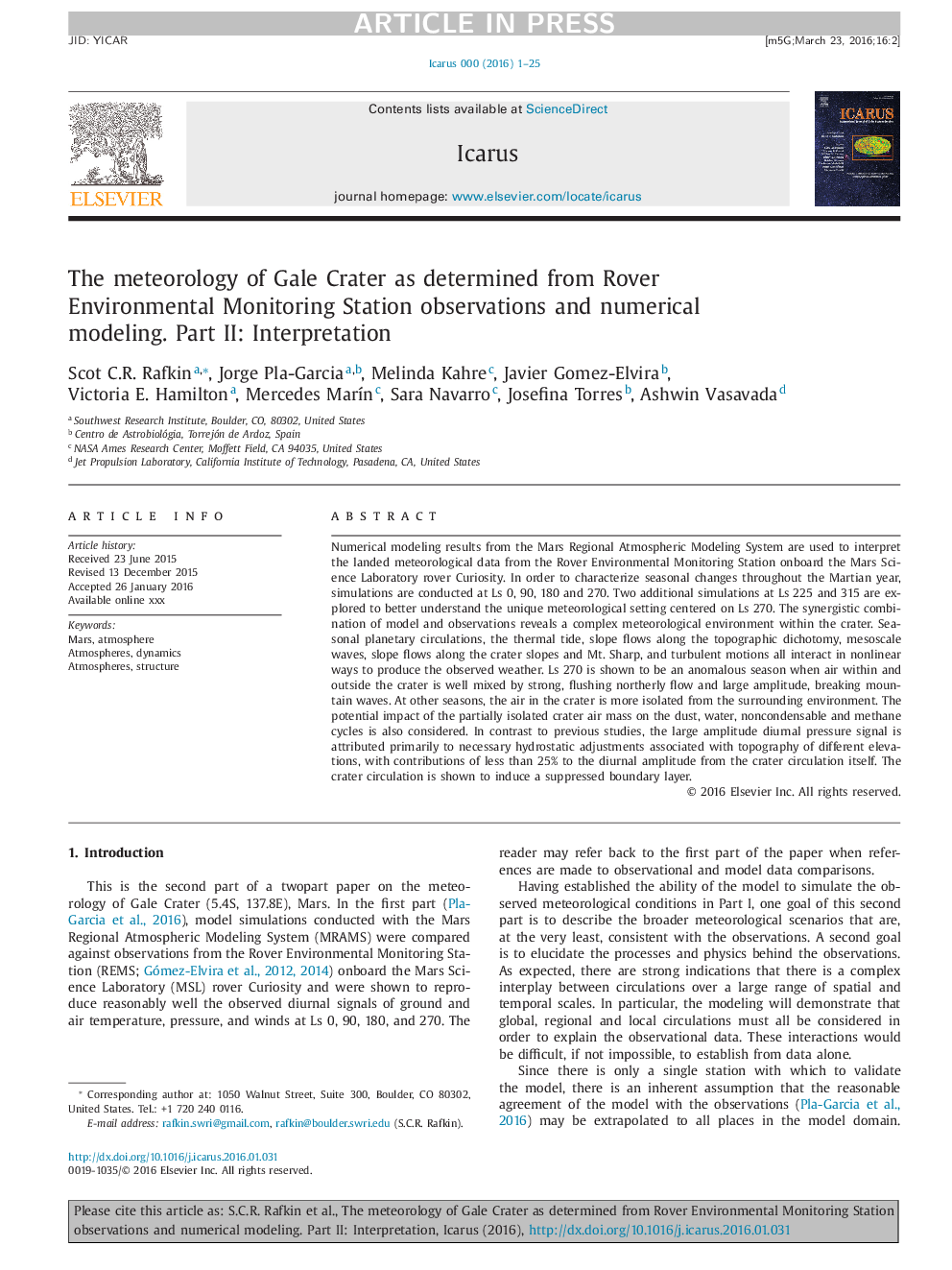| Article ID | Journal | Published Year | Pages | File Type |
|---|---|---|---|---|
| 8134717 | Icarus | 2016 | 25 Pages |
Abstract
Numerical modeling results from the Mars Regional Atmospheric Modeling System are used to interpret the landed meteorological data from the Rover Environmental Monitoring Station onboard the Mars Science Laboratory rover Curiosity. In order to characterize seasonal changes throughout the Martian year, simulations are conducted at Ls 0, 90, 180 and 270. Two additional simulations at Ls 225 and 315 are explored to better understand the unique meteorological setting centered on Ls 270. The synergistic combination of model and observations reveals a complex meteorological environment within the crater. Seasonal planetary circulations, the thermal tide, slope flows along the topographic dichotomy, mesoscale waves, slope flows along the crater slopes and Mt. Sharp, and turbulent motions all interact in nonlinear ways to produce the observed weather. Ls 270 is shown to be an anomalous season when air within and outside the crater is well mixed by strong, flushing northerly flow and large amplitude, breaking mountain waves. At other seasons, the air in the crater is more isolated from the surrounding environment. The potential impact of the partially isolated crater air mass on the dust, water, noncondensable and methane cycles is also considered. In contrast to previous studies, the large amplitude diurnal pressure signal is attributed primarily to necessary hydrostatic adjustments associated with topography of different elevations, with contributions of less than 25% to the diurnal amplitude from the crater circulation itself. The crater circulation is shown to induce a suppressed boundary layer.
Related Topics
Physical Sciences and Engineering
Earth and Planetary Sciences
Space and Planetary Science
Authors
Scot C.R. Rafkin, Jorge Pla-Garcia, Melinda Kahre, Javier Gomez-Elvira, Victoria E. Hamilton, Mercedes MarÃn, Sara Navarro, Josefina Torres, Ashwin Vasavada,
